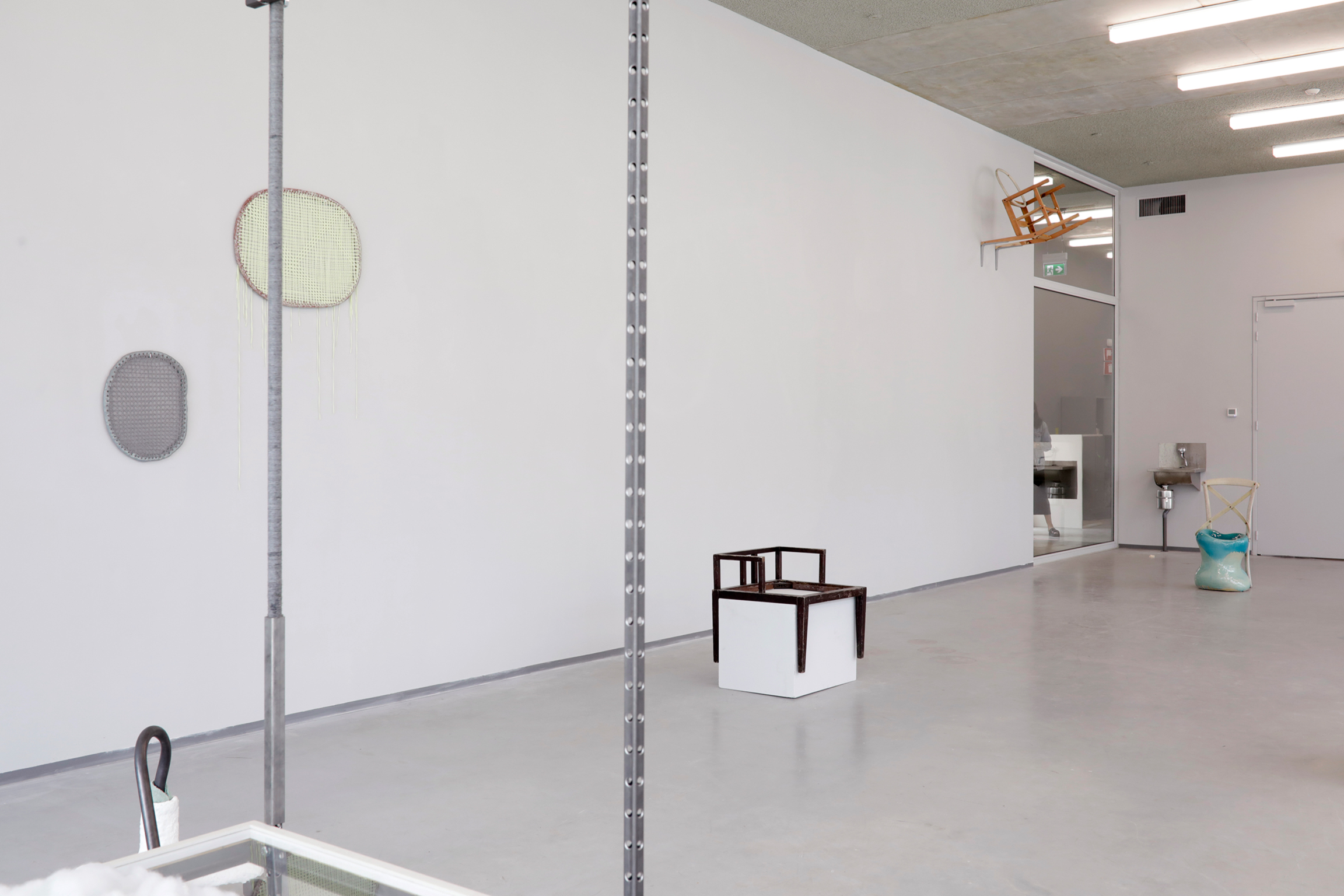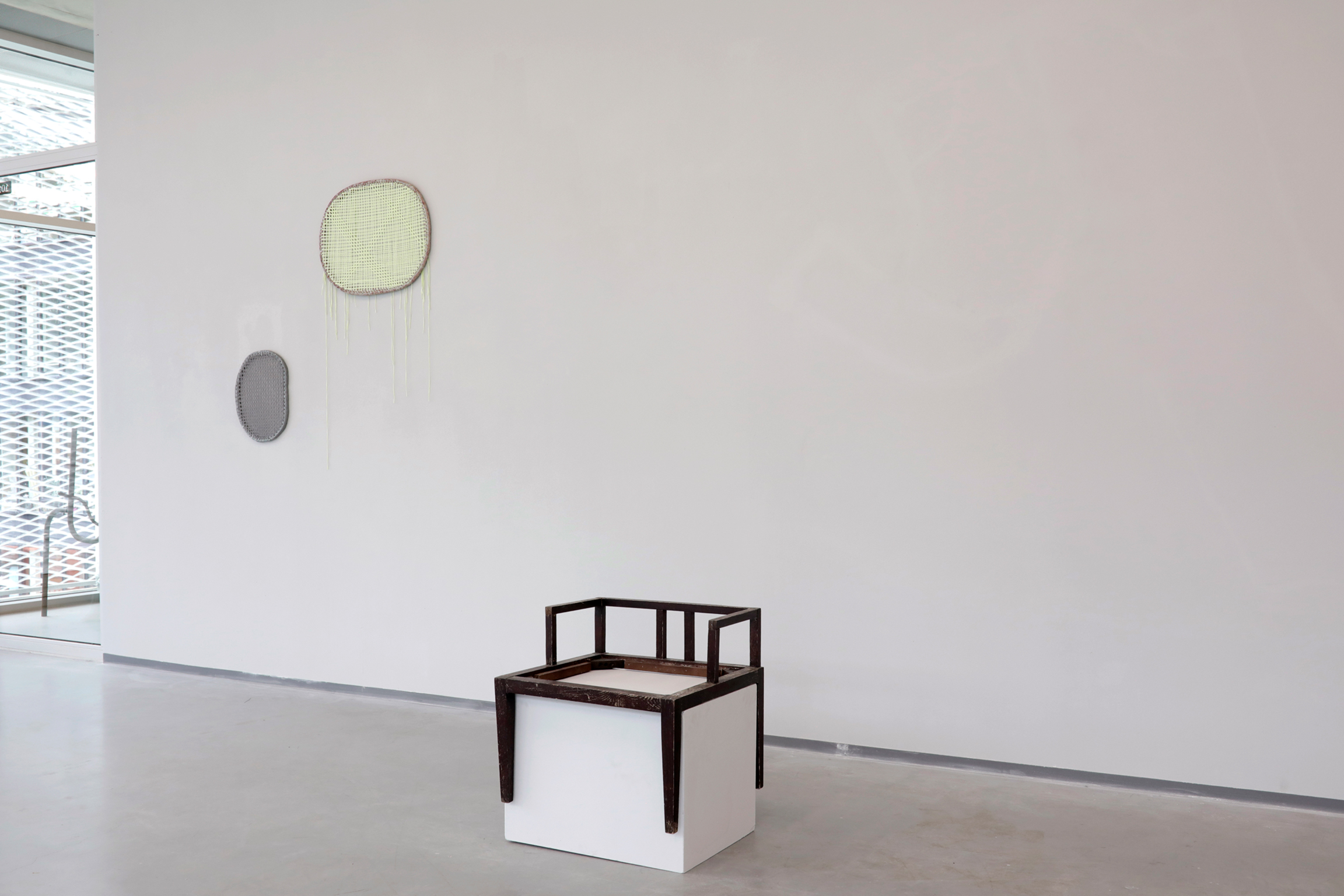Reconfigured Chairs, 2021
Graduation show at Gerrit Rietveld Academie(NL)
Chairs are the most obvious and functional tools in our everyday lives. I cannot help but engage with chairs, especially when they catch my attention as rejected items on the street. As I wanted to examine these found objects more closely, I started picking them up off the street. Since then, chairs of all sizes and shapes have surrounded me.
After a while, several questions arose. Why had they been discarded? Where and how had they existed before? How long will their lifespan be? Where would these chairs have gone if I hadn’t picked them up? But also: who am I to give them an afterlife?
I became interested in disassembling the chairs into their parts. At some point I even employed the method of “reverse engineering.” This enables me to deconstruct the chairs in a systematic order. In doing so, I try not to be consistent at all. Rather, I intuitively rearrange and re-establish clay elements according to my personal taste. Sometimes a new construction resembles a chair at first, but turns out to be a chair-like object that is not necessarily a functional thing to sit on.
I am constantly transforming compositions and trying out new combinations of elements. As in a work in progress, I want any kind of metamorphosis to be transitional, and not fixed. Through my interventions, the chairs lose their functionality, and a new kind of sculpture comes into being. I even wonder if and how my reconfigured chairs will find a new “rationale” for a new existence.
Apart from all their individual features, I’m also interested in how the spatial configuration of a group of chairs new meanings. After all, the way I position them affects the context in which they are perceived. For instance, a circular arrangement makes me regard each of them as a human being. Immediately a group therapy session at a mental clinic comes to mind; in a similar configuration alcoholics and drug addicts gather in “conversation circles” with the aim of reconnecting with society. In contrast, displaying them on a shelf associates them with a shop window where products are sold, and when placed on pedestals, they radiate the aura of the kind of artefact we must pay attention to.
Clay echoes its past. It hardens as time passes, eternalizing the last malleable shape it was given. Somehow, I have always found clay’s ability to resonate its memory romantic. Even more so, clay expands my imagination. Imagination is weightless, has no texture, no shadow. I employ the material property of clay to add imagination into everyday reality. Apart from facilitating this, clay can even evoke a train of thought; when insubstantial imagination and heavy clay meet, they cross-pollinate and complement one another’s worlds.
One day I noticed that these reconfigured chairs resemble me in a way. Looking back on my life, I feel like I’ve always existed in some kind of liminal space. In relationships between people, I often act as a buffer or mediator who is on neither side and is trying to exist in the blurry, transitional zone in between. Every once in a while, I have a vision in which my body is in the real world, but my mind is outside of reality. I keep looking for a place to hide where I won't be exposed, afraid to be assigned to a fixed position. Yet, I constantly hesitate – in despair about my own position in society.
These artefacts are neither chairs nor sculptures. They are neither well-designed products nor great works of art. These are objects that seek to survive their in-between-ness. It might well be that my chairs constitute a self-portrait.







Photography : Maarten Kools